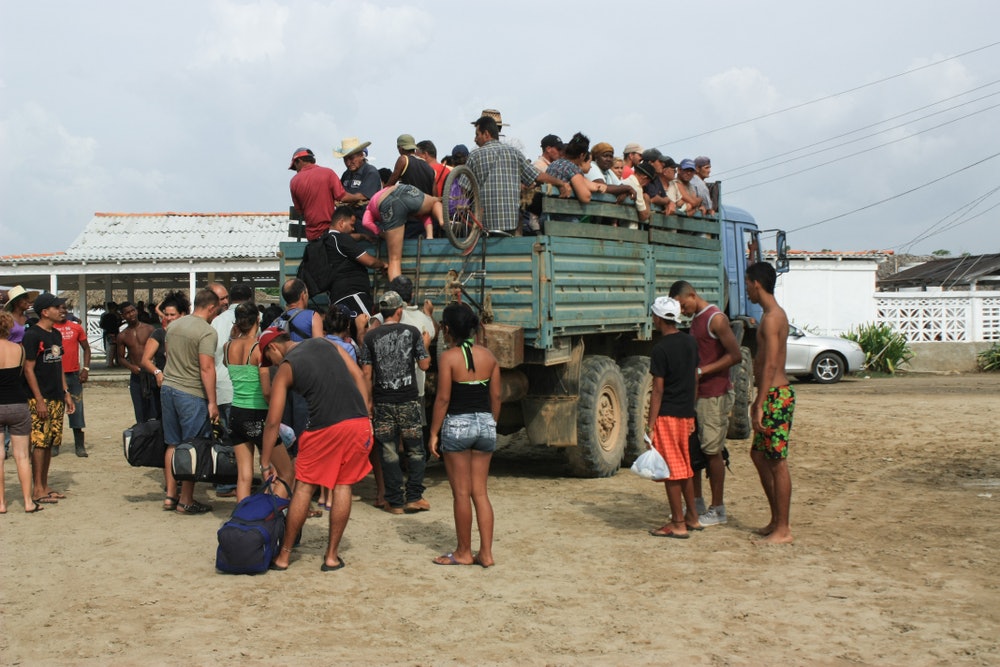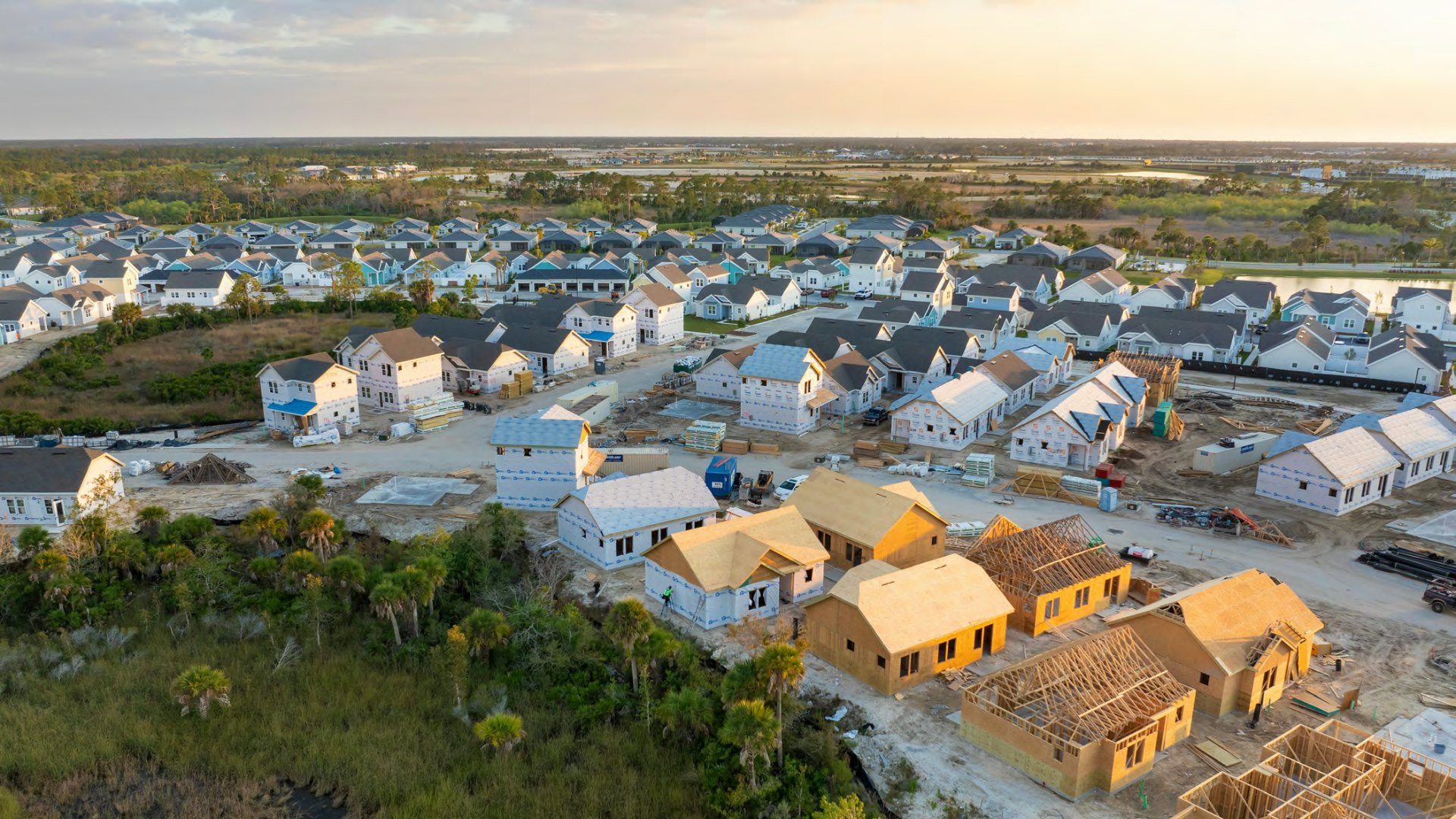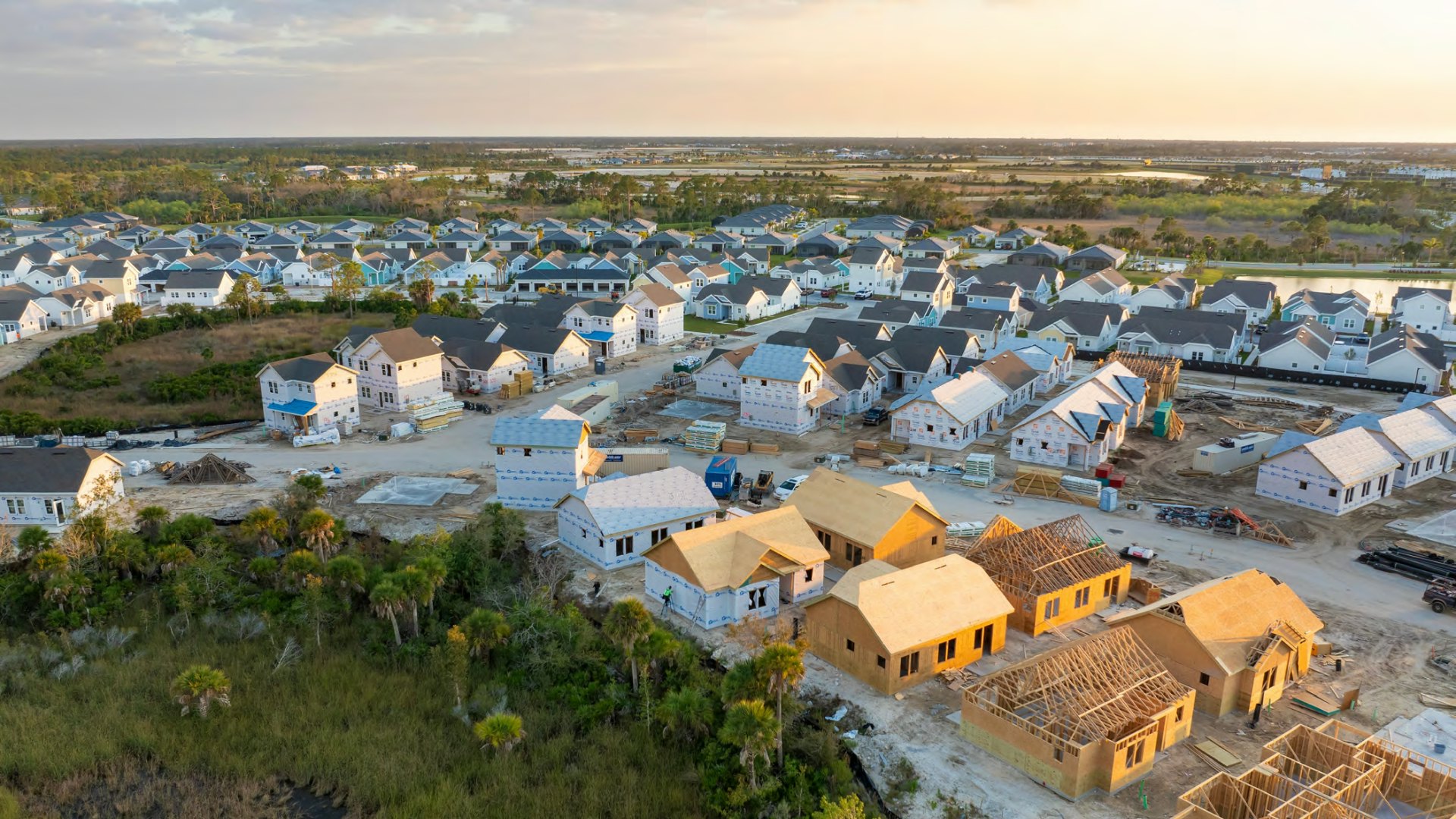Recommendations:
- The U.S. government should engage with the governments of the region to ensure that assistance to companies investing in the region is accompanied by serious efforts to address business-climate weaknesses
- The U.S. government, in partnership with nonprofit organizations and other democratic governments, should support civil society, including journalists and human rights defenders
- Congress should pass bipartisan immigration reform that reduces pressure at our border and creates legal pathways for Northern Central American migrant workers to contribute to our prosperity
- The U.S. government, in partnership with nonprofit organizations, should improve access to legal counsel and trauma support for women and girls fleeing gender-based violence
Over 35% of the approximately 1.6 million migrants arriving at our southern border in 2021 were families or unaccompanied children. Almost 200,000 children came from Northern Central America (El Salvador, Guatemala, Honduras), and about half of them were unaccompanied. Shifting demographics, the increase in children and family arrivals, and the increase in large caravans arriving from Northern Central America have spurred a conversation into the root causes of migration.
With billions of dollars of foreign aid and development investment being directed to these countries to address the underlying reasons for migration, it’s imperative that stakeholders have an adequate understanding of the depth, complexity, and interconnectedness of these root causes. It’s all too easy for the nuances that inform good policy to be superficialized into one-dimensional concepts and lost in the pursuit of quick wins.
The reasons people migrate from Northern Central America are complex and interconnected, stretching from economic opportunity to gang violence to ineffective governance. Some of the most obvious are gender-based violence, poverty, instability, and corruption in their home countries, as well as impunity for violent offenders. There are also more nuanced drivers that help create an environment people either choose to leave or are forced to leave. These include low educational attainment, the influence of remittances, and family reunification. And these are just the “push factors,” not the “pull factors” – in particular the presence of a large Central American community in the United States that offers a daily reminder that life here is in many ways easier, safer, and more prosperous.
The debate in Washington policy circles surrounding the root causes of migration tends to focus on the lack of economic opportunity in Northern Central America. A great deal of attention – and public money – has been devoted to encouraging job-creating investment in the region and to trumpeting investment commitments and the numbers of jobs they will create for people in Northern Central America, as though that is the end of the story.
Gang violence and violence against women are also driving people to seek their fortunes elsewhere. Many programs intended to reduce violence have been in place for decades, and yet the problem has only gotten worse.
Poor governance is a key factor, but one that’s notoriously resistant to foreign intervention. Assistance to these imperfect but functioning democracies instead tends to focus on training law enforcement and justice-sector personnel in the hope that the citizenry will one day demand good governance.
All these programs are well intended and, in some cases, actually effective – within a relatively narrow scope. More investment is better than less and creates opportunity. Successfully implemented community policing programs can reduce gang violence in neighborhoods. By strengthening the infrastructure of shelters, survivors of assault can find support and services. And training programs do boost the expertise and effectiveness of law enforcement organizations.
While only Central Americans themselves can resolve the problem of poor governance, there is potential for effective interventions. These interventions must consider the intersection of root causes and the underpinning of poor governance, ultimately encouraging Northern Central Americans to move toward a freer and more prosperous society.
The root causes of migration from Northern Central America
Corruption, a regularly cited problem in Central America, is both a cause and an effect of poor governance. It’s easy to name, but difficult to remedy because of its intractable nature. Corruption feeds impunity which feeds inequality which feeds instability which feeds insecurity which weakens institutions which feeds corruption and so on and so forth in an endless cycle.
When corrupt institutions focus primarily on benefiting bureaucrats, they become inefficient and ineffective at achieving their stated goal of serving their people. Everything becomes unreliable. In rural areas, water and electricity may not be available every day. The nearest health centers may be hours away. Schoolteachers don’t show up for class, and public hospitals run out of medication.
Weak institutions, meanwhile, have far-reaching impact, such as chronic malnutrition in Guatemalan children, Hondurans averaging only seven years of school, and over 43% of jobs in El Salvador being informal (working for cash, off the books, many times because the employer is not a registered business or is a small street vendor). Chronic malnutrition increases vulnerability to diseases, causes developmental delays, stunts growth, and increases overall rates of infant and child mortality. Economic growth and workforce participation suffer when the number of years of formal schooling completed is low. Informal-sector jobs are typically low wage, with little to no access to social security. They also reduces the amount of tax revenue that governments collect, limiting the availability of funding for social and government services.
When judicial institutions such as the police and courts become corrupt, inefficient, and weak, citizen security is directly affected. Impunity becomes widespread, destabilizing communities as there are no legal consequences for crime. In all three countries, over 95% of crimes against women and girls go unpunished. This includes all crimes on the continuum of violence up to sexual assault and femicide. Often referred to as gender-based violence, it undermines women and girls’ agency and well-being, as well as the stability and prosperity of their communities.
Insecurity is further compounded by the presence of transnational criminal organizations using all three countries as transit routes for the illicit smuggling of people and illegal substances. Local gangs, known as maras, assume control over their self-professed territory – leaving citizens in that area under the control of the gangs and completely unprotected by the state. The presence and prevalence of private security hired by those with above-average resources point to the governments’ unwillingness or inability to provide a basic level of safety for their citizens. These structural challenges coupled with social/cultural ideas and norms around masculinity, gender, and violence create conditions that become untenable, especially for women and children.
Corruption, weak institutions, high levels of violence and impunity lead to instability and displacement. Both men and women are more likely to leave areas where violence against women occurs. Most people and displaced families move to other areas within their home country more than once looking for safety and stability. This constant internal migration further destabilizes communities.
In this environment of corruption, weak institutions, gender-based violence, impunity, instability, and displacement, it is no wonder we see depressed economies, low female labor force participation, and constrained job growth. Economic interventions alone cannot adequately address the root causes of this poor economic environment. Weak institutions can compound the impact on economic performance, as they also make it difficult for companies to comply with regulations. Regulations that are expensive, difficult to navigate, and cumbersome reduce the chances of compliance. Add in the likelihood of having to pay a petty bribe at each stop in any regulatory process, and it becomes clear how ineffective institutions suppress the formal employment sector.
Just as the confluence of root causes affects citizens’ daily lives, it also impacts the business climate. Local businesses struggle under gang “rents” (extortion payments to the gang in exchange for protection from said gang), compete in a bribery-heavy environment, and see low returns for complying with burdensome regulations. Potential foreign investors see a risk calculus that just doesn’t make sense for them, especially due to political and legal instability. If the rule of law is not honored for citizens, foreign investors cannot be confident that their business contracts will be. This is true even though these countries hold enormous potential, including proximity to the United States and Western Hemisphere supply chains, a booming working-age population, and preferential trade regulations under CAFTA-DR, the free-trade agreement between the United States, Costa Rica, El Salvador, Guatemala, Honduras, Nicaragua, and the Dominican Republic.
It’s important to note that economic migration is a term sometimes used dismissively, as if the economic push factor is trivial and economic migrants are just looking for better malls. It doesn’t adequately convey the severity of the situation in places like Guatemala, where 8-year-olds die from malnutrition weighing 37 pounds; 50% of primary age children are chronically malnourished; and infant, child, and maternal mortality rates are all among the highest in the world.
The vicious cycle of corruption, weak institutions, and impunity is propelled by the absence of the rule of law. And the lack of democracy fuels the cycle.
Democracy is receding globally and experiencing its steepest decline in Latin America. Recent developments in El Salvador, Guatemala, and Honduras point to worrying autocratic shifts – at precisely the moment these countries have the most to gain by collaborating with their democratic neighbors. The incredible opportunity of U.S. investment, foreign assistance, aid, and development is being utterly wasted by the rhetoric of autocrats decrying “foreign regimes” at the same time U.S. officials are calling for increased nearshoring and ally-shoring (making supply chains more resilient by moving them and investment closer to the United States).
Populist autocrats have successfully tapped into citizens’ frustrations. Many living in the region have no particular affinity for democracy, because they don’t think it’s ever delivered for them. About half the population surveyed for the 2021 Americas Barometer report published by the Latin American Public Opinion Project at Vanderbilt University indicated a willingness to forego basic democratic institutions like elections if they could gain better income and reliable access to basic services. Autocrats instinctively seize on this sentiment and gain popularity by simultaneously offering benefits (cash transfers, food programs, computers for schools, COVID-19 vaccines, etc.) while they consolidate power, capture legislative and judicial structures, and oppress civil society, including journalists.
All of this comes at a cost: The financial situation in these countries is tenuous and unable to sustain long-term social spending while driving out foreign investment. What we’re seeing is this gamble play out. What happens when the autocrat’s house of cards come stumbling down and citizens have traded their freedoms but are not better off for it? This is the ultimate root cause of migration – inadequate and undemocratic governance.
Migration and remittances
Leaving home is the only chance for survival for many people, not a choice. Unfortunately, their options are slim. Most people who choose to migrate to the United States moved within their home country first – understandably trying to make it in a place they still call home, where culture and language are native, and social support may be nearby. But persistent inequalities and the ties between wealth and security mean that many of the displaced only have access to areas with equal or worse security concerns.
The confluence of push and pull factors are important to note here: Virtually everyone knows someone who has made it to the United States and is sending money back to their families AND someone in the community who has been killed. These vastly different outcomes reveal the starkness of the possible futures many must weigh.
Remittances, money sent home from those working abroad, are easily visible by the market distortions they create. They provide a massive influx of liquidity that flows directly to households, directly relieving poverty. Remittances currently make up 15% of GDP in Guatemala and 24% in both El Salvador and Honduras. But they also trigger an effect eerily similar to one seen in oil-rich developing countries: They shift the economy toward services and consumption and away from producing goods while at the same time bidding up the exchange rate and making a country’s exports less competitive in international markets.
The result is that families whose members migrate can pay for things like homes and consumer goods, while families who don’t have someone sending remittances are stuck in poverty. This further exacerbates existing inequality and reduces pressure on the state to provide social services. Given the lack of legal pathways available, this push to migrate also generates financial incentives for criminal organizations to smuggle people.
Northern Central Americans who migrate through Mexico toward the United States are vulnerable to coyotes (smugglers), gangs, cartels, and police, groups to which they are vulnerable in their home countries, as well. More than 60% of migrants were exposed to a violent situation in the two years before migrating. Women and children in particular are vulnerable to sexual violence, trafficking, and exploitation along the migratory route to the United States, and many women and girls seek a contraceptive shot at the beginning of their journey. This year, deaths at the U.S.-Mexico border have reached a historic high. Migrants do not take this journey lightly – they come because the horrors they face at home are so much worse.
Recommendations
The U.S. government should engage with the governments of the region to ensure that assistance to companies investing in the region is accompanied by serious efforts to address business-climate weaknesses
The root causes of migration push out both investment and citizens. Injecting additional investment into this climate without addressing regulatory and other dysfunctions will not create enduring jobs. On the contrary, the minute U.S. subsidies disappear, so will the jobs. This moment of intense focus on the region – and of heightened interest in Northern Central America as an investment location – creates a unique opportunity to shape the business climate. The United States should not squander it.
The U.S. government, in partnership with nonprofit organizations and other democratic governments, should support civil society, including journalists and human rights defenders
Attacks on civil society and the shrinking of safe spaces for dialogue dim the light that civil society is trying to shine on corruption and human rights violations. It also silences the voices calling for the promotion of democracy and strengthening of democratic institutions and democratic norms. Support includes security, targeted funding, refuge for dissidents, among other strategic initiatives to strengthen democracy.
Congress should pass bipartisan immigration reform that reduces pressure at our border and creates legal pathways for Northern Central American migrant workers to contribute to our prosperity
Every year that goes by without reforming the United States immigration system means a missed opportunity to ensure the future prosperity, vitality, and security of our Nation. Investment in a 21st century approach to border management is a key to reducing pressure on our border. Read our immigration recommendations at www.bushcenter.org/immigration.
The U.S. government, in partnership with nonprofit organizations, should improve access to legal counsel and trauma support for women and girls fleeing gender-based violence
Violence against women and children (including gender-based violence) is a particularly insidious symptom of weak institutions and a suppressed civil society. The most vulnerable in a society suffer disproportionately when crime goes unpunished. You can read the Bush Institute’s recommendations regarding gender-based violence in Northern Central America at www.bushcenter.org/centralamerica.
Only the pillars of democracy – freedom, accountability, and opportunity – will sustainably reverse the momentum of the vicious cycle triggered by the root causes of migration. Free markets and free people are essential to lasting peace and prosperity.
Migration can ultimately be understood as part displacement and part citizens voting with their feet. Efforts to address the root causes of migration from Northern Central America need to bridge the gap between the root cause and democratic governance. A better business climate leads directly to lower corruption in the private sector, increased investment, more jobs in the formal sector, and increased tax revenue.
More jobs in the formal employment sector can make education more valuable, increasing the overall years in formal schooling. Alongside efforts to strengthen the justice system, reducing impunity and insecurity may ensure that the citizens of Northern Central America feel less pressure to leave. At these first inklings of hope, a robust civil society is important. Reduced migration means reduced remittances and increased pressure on the government to provide social services. Weak institutions and authoritarian leaders will not be keen to change the status quo. Civil society, including journalists, human rights defenders, and democracy promoters will play a key role educating the citizens of Northern Central America of their rights and exposing corruption and corrupt actors. With free and fair elections, leaders can be voted in that more accurately reflect the will of the people.
The global democratic community has a responsibility to support those working tirelessly to change the trajectory toward authoritarianism in their communities. The United States can do this in Northern Central America by taking tangible action, narrow in scope but broad in impact, informed by an understanding of the interconnectedness of the root causes of migration, to disrupt the vicious cycle of corruption, impunity, and authoritarianism. With our support, the citizens of Northern Central America can generate a wave, una ola, of not just better circumstances, but of hope.
Although commitment to democracy in the region is at a low point, the citizens of El Salvador, Guatemala, and Honduras ultimately do have the agency to vote for leaders that will uphold democratic norms and institutions and to vote out leaders that don’t. By their vote, their voice can be heard, and their governments held accountable.






























